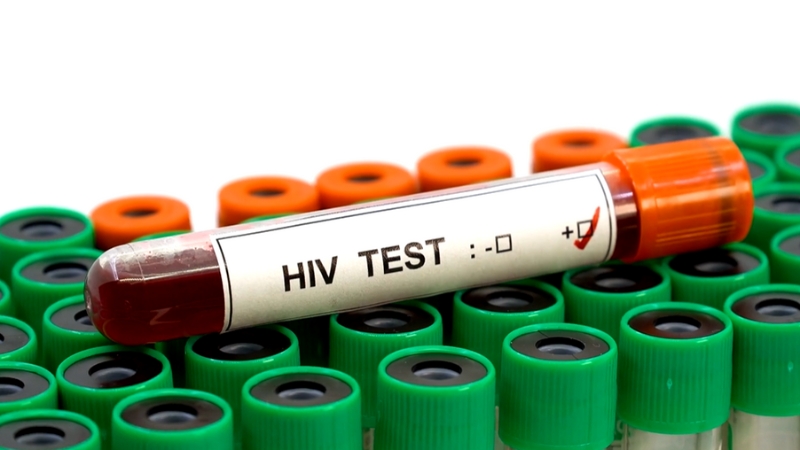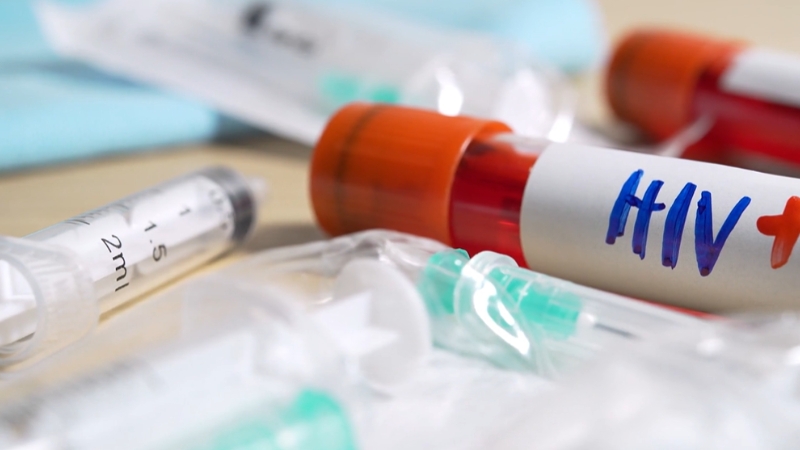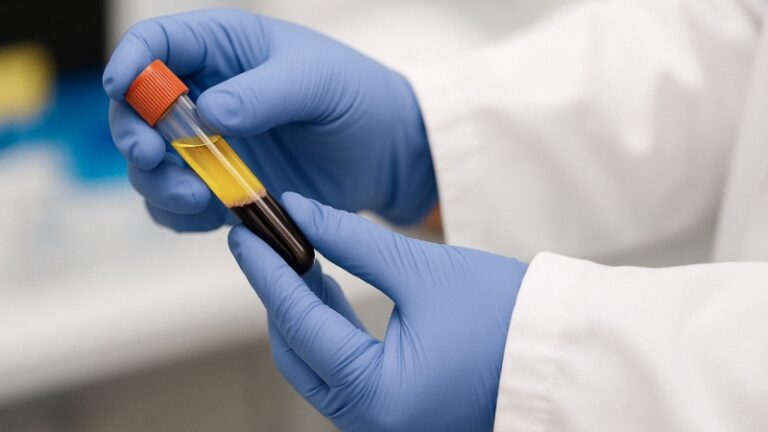When it comes to HIV testing, time is everything. The sooner an infection is detected, the faster treatment can begin, and the greater the chance of controlling the virus and preventing its spread.
This is where HIV RNA and DNA PCR testing, powered by NAAT (Nucleic Acid Amplification Testing), makes a crucial difference. Unlike standard antibody tests that rely on the body’s immune response, NAAT detects the virus itself, often within just 7 to 10 days after exposure.
So, what’s the concrete answer? NAAT is the most sensitive and earliest available method for detecting HIV, capable of identifying the virus during the window period—long before antibodies develop.
Whether used for early diagnosis, infant testing, or monitoring treatment, HIV RNA/DNA PCR testing represents the gold standard in modern HIV care.
This article breaks down exactly how these tests work, when they’re used, and why they’re a game-changer in HIV detection and management.
How HIV RNA and DNA PCR Testing Works

HIV RNA PCR Test
- Detects free-floating HIV RNA in plasma.
- Can detect the virus 7–10 days post-infection.
- Typically used in early detection and monitoring of viral load in people already diagnosed.
HIV DNA PCR Test
- Detects proviral DNA — HIV DNA that’s been integrated into the host’s immune cells.
- Used primarily in infants born to HIV-positive mothers, where maternal antibodies may interfere with regular testing.
The PCR Process (Polymerase Chain Reaction)
PCR testing involves several steps:
Step
Description
Sample Collection
Blood is drawn (usually plasma or whole blood).
Nucleic Acid Extraction
HIV RNA or DNA is extracted from the sample.
Amplification
PCR is used to amplify viral nucleic acids to detectable levels.
Detection
Fluorescent markers or probes confirm presence and quantity.
After the blood sample is collected—usually plasma for RNA or whole blood for DNA—the viral genetic material is carefully extracted in a controlled lab setting. This step isolates either HIV RNA or DNA, depending on the test type.
It’s a delicate process where even slight errors in handling or timing can compromise accuracy.
For RNA testing, the goal is to capture free-floating virus in the bloodstream, while DNA testing looks for proviral DNA lodged within infected immune cells.
Next comes amplification using polymerase chain reaction (PCR), where small traces of HIV genetic material are multiplied millions of times to reach detectable levels. In RNA PCR, reverse transcriptase first converts RNA into DNA before amplification.
With real-time PCR, not only is the virus detected, but its amount—called the viral load—is measured, providing a clear picture of how active the infection is. This step is so sensitive that it can detect as little as one viral copy per milliliter of blood.
The final detection stage uses fluorescent markers to signal whether HIV is present. If viral material is found, it confirms infection even before the body produces antibodies.
In infants born to HIV-positive mothers, DNA PCR is especially valuable because maternal antibodies can interfere with standard antibody tests.
Overall, this process allows for extremely early and accurate detection, making it essential for early diagnosis, newborn screening, and monitoring people living with HIV.
Window Period: Why NAAT is So Valuable
View this post on Instagram
Test Type
Detection Window
Notes
Antibody Test
3–12 weeks
Depends on the immune response; delayed.
Antigen/Antibody Test
2–6 weeks
Detects p24 antigen + antibodies.
HIV RNA PCR (NAAT)
7–10 days
Detects virus before antibodies appear.
The window period is the time between HIV exposure and when a test can reliably detect the virus, according to WebMD.
Traditional antibody tests can take 3 to 12 weeks to show a positive result because they rely on the body’s immune response, which takes time to develop.
Antigen/antibody combination tests shorten that window to about 2 to 6 weeks by detecting both antibodies and the p24 antigen, a viral protein that appears earlier.
However, HIV RNA PCR testing, a form of NAAT, can detect the virus as early as 7 to 10 days after infection, as noted by Clarewellclinics.
This makes it the most reliable option for early detection, especially after high-risk exposure or during acute HIV symptoms. NAAT doesn’t depend on the immune system’s response—it looks directly for the virus itself.
That’s why it’s the gold standard in diagnosing HIV during the early, highly infectious stage.
Clinical Uses of HIV NAAT

HIV NAAT is especially valuable in clinical situations where early and accurate diagnosis is critical. After a high-risk exposure—such as unprotected sex, needle sharing, or occupational exposure, NAAT can detect the virus during the very early phase, even before the body produces antibodies.
This is particularly useful when someone presents with symptoms of acute HIV infection, often called seroconversion illness.
In newborns born to HIV-positive mothers, standard antibody tests can be misleading because maternal antibodies cross the placenta and stay in the baby’s system for months. NAAT bypasses this issue by detecting the virus itself, making it the preferred method for early infant diagnosis.
It’s also used to resolve indeterminate or conflicting results from antibody or antigen/antibody tests, providing a definitive answer by directly identifying HIV RNA or DNA.
For individuals already diagnosed with HIV, RNA PCR testing plays a vital role in treatment monitoring. It measures viral load—how much virus is in the blood—which helps healthcare providers assess how well antiretroviral therapy (ART) is working and make decisions about ongoing care.
Advantages and Limitations of HIV RNA/DNA PCR Testing
- Early detection (within days of infection)
- Quantitative results (HIV RNA viral load in copies/mL)
- Highly sensitive and specific
- Critical for infant testing
- Useful in ambiguous cases or early symptoms
- Cost: More expensive than rapid tests.
- Turnaround Time: Can take a few days for results.
- Not always widely available: Especially in low-resource settings.
- False positives are possible** in low-risk individuals without confirmation.
Real-World Statistics
Statistic
Data
Detection Sensitivity (HIV RNA PCR)
>99% within 10 days post-infection
HIV RNA PCR Detection Limit
As low as 20 copies/mL (some tests <10 copies/mL)
False Positives (in low-prevalence settings)
<0.1%, but confirmatory testing is always recommended
Time to Antibody Seroconversion (Median)
3–4 weeks after infection
HIV RNA PCR testing is among the most sensitive diagnostic tools available, with a detection sensitivity exceeding 99% within 10 days of infection.
This high accuracy is due to its ability to identify viral RNA at extremely low levels—often as low as 20 copies/mL, and in some specialized assays, even under 10 copies/mL, according to STD Check.
While the risk of false positives is very low in low-prevalence settings (less than 0.1%), confirmatory testing is always recommended to ensure diagnostic certainty.
In contrast, the average time for antibody seroconversion is about 3 to 4 weeks, during which other tests might return false negatives.
These statistics underline the importance of NAAT, especially for early detection and in cases where timing and precision are crucial.
Final Thoughts
@doctoredwinbackup Best HIV Test to detect accurate results. #hiv #results #signs #symptoms #doctoredwin #creatorsearchinsights #healthtips ♬ original sound – Bold Line Entertainment
If you’ve had a high-risk exposure, are experiencing early HIV symptoms, or need definitive testing for yourself or a newborn, HIV RNA/DNA PCR testing via NAAT is a powerful diagnostic tool.
While not necessary for routine testing in low-risk individuals, it’s invaluable in situations where speed, sensitivity, and certainty matter most.
It’s also important to note that individuals with syphilis are at a higher risk of contracting HIV, as the presence of syphilis sores can facilitate the transmission of the virus.
Whether you’re a healthcare provider or someone seeking testing, understanding NAAT can empower better decisions and earlier interventions — ultimately saving lives and curbing transmission.

